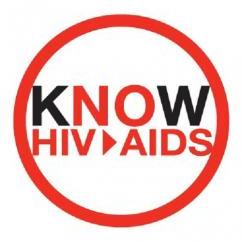
If you're HIV positive, you can live for years without the virus progressing to AIDS — if you follow your HIV treatment plan. By Elizabeth Connor, Medically reviewed by Lindsey Marcellin, MD, MPH
Once a person has been infected with the human immunodeficiency virus (HIV), the progress of the disease is influenced by factors both within and outside of the patient’s control. An effective form of HIV treatment, called highly active antiretroviral therapy (HAART), was introduced in 1996 and forever changed HIV disease from an almost certainly fatal condition to a difficult but long-term chronic illness.
Within a month or two after a person is exposed to HIV, he or she may come down with an illness that resembles the flu. Common symptoms of this illness include fever, headache, fatigue, and swelling of the lymph nodes in the neck and groin. Although the flu-like symptoms go away, a person in the early stages of HIV is still very infectious.
After the initial illness, a person may not experience any HIV symptoms for a long time, perhaps 8 to 10 years. However, 5 to 15 percent of people with HIV get sick more quickly than this, and a similar percentage remain symptom-free for longer than 10 years.
Staging HIV
The outward symptoms of HIV disease can look very different from one person to the next, so doctors use precise clinical tests to categorize HIV in one of three stages. The final stage of infection is acquired immune deficiency syndrome, or AIDS.
Stage 1: In stage 1, a person does not have any of the diseases associated with severe HIV infection (called an AIDS-defining disease) and a relatively high level of the immune cells that fight infection (called CD4+ T-cells, or simply CD4 cells).
Stage 2: In stage 2, there is still no AIDS-defining disease, but the level of CD4 cells has fallen dramatically.
Stage 3: In the final stage, AIDS, a person has at least one of the AIDS-defining diseases and a very low level of CD4 cells.
Signature HIV Symptoms
As HIV disease progresses and the CD4 count drops, but before the definition of AIDS is met, many people with HIV infection experience the following symptoms:
Sweats
Fevers
Swollen lymph nodes
When the CD4 count gets very low, the immune system can no longer protect the body against common infectious agents in the environment that would not normally cause illness. Certain cancers may also appear in HIV patients because of the body’s dramatically lowered immunity. When one of these conditions is diagnosed in someone with a CD4 count less than 200, it is said to be an AIDS-defining disease — therefore, the person now meets the U.S. Centers for Disease Control and Prevention’s (CDC’s) definition of having AIDS. The most common aids-defining diseases include:
Severe herpes simplex virus infections
Pneumocystis carinii pneumonia
Cytomegalovirus infection of the eye
Active tuberculosis
Yeast infection of the esophagus
Severe shingles outbreaks
Encephalopathy (brain inflammation)
Wasting syndrome
Cancer of the lymph glands
Kaposi’s sarcoma
A person with AIDS has a very weak immune system and frequently will come down with more than one serious, debilitating illness at a time.
Personal Characteristics Can Increase HIV Risk
The rate at which HIV progresses is different for each person, and can be influenced by many factors. Here are some facts:
Older people infected with HIV are likely to become sick more quickly than those who are younger.
How a person becomes infected with HIV can influence how quickly their HIV progresses. In one study, HIV progressed to AIDS most quickly among men who have sex with men. These men had a high rate of Kaposi’s sarcoma, a type of cancer that is rare among people without HIV. Injection drug users also often progress to AIDS faster than those who do not inject drugs
Both men and women with multiple sex partners progress faster from HIV to AIDS
A person’s immune system and genetics can affect whether they become infected with HIV after exposure and also how fast the HIV progresses.
Not everyone infected with HIV will necessarily progress to AIDS. In a study of the deaths of almost 500 HIV-positive people, only about 10 percent died from a disease strongly linked to AIDS. Frequently, the cause of death was a debilitating disease with a weaker association with HIV or a factor not related to HIV at all.
Between 1995 and 1996, the estimated remaining lifetime for a 25-year-old person with HIV was eight years. For the same person diagnosed between 2000 and 2005, the expected remaining time of life was about four times that, approximately 33 years. Many factors play a part in these dramatic gains in life span, particularly improved therapies and long-term behavior changes among people living with HIV.
- Login to post comments


Recent comments
9 years 10 weeks ago
9 years 31 weeks ago
9 years 35 weeks ago
9 years 38 weeks ago
9 years 39 weeks ago
12 years 6 weeks ago
12 years 20 weeks ago
12 years 40 weeks ago